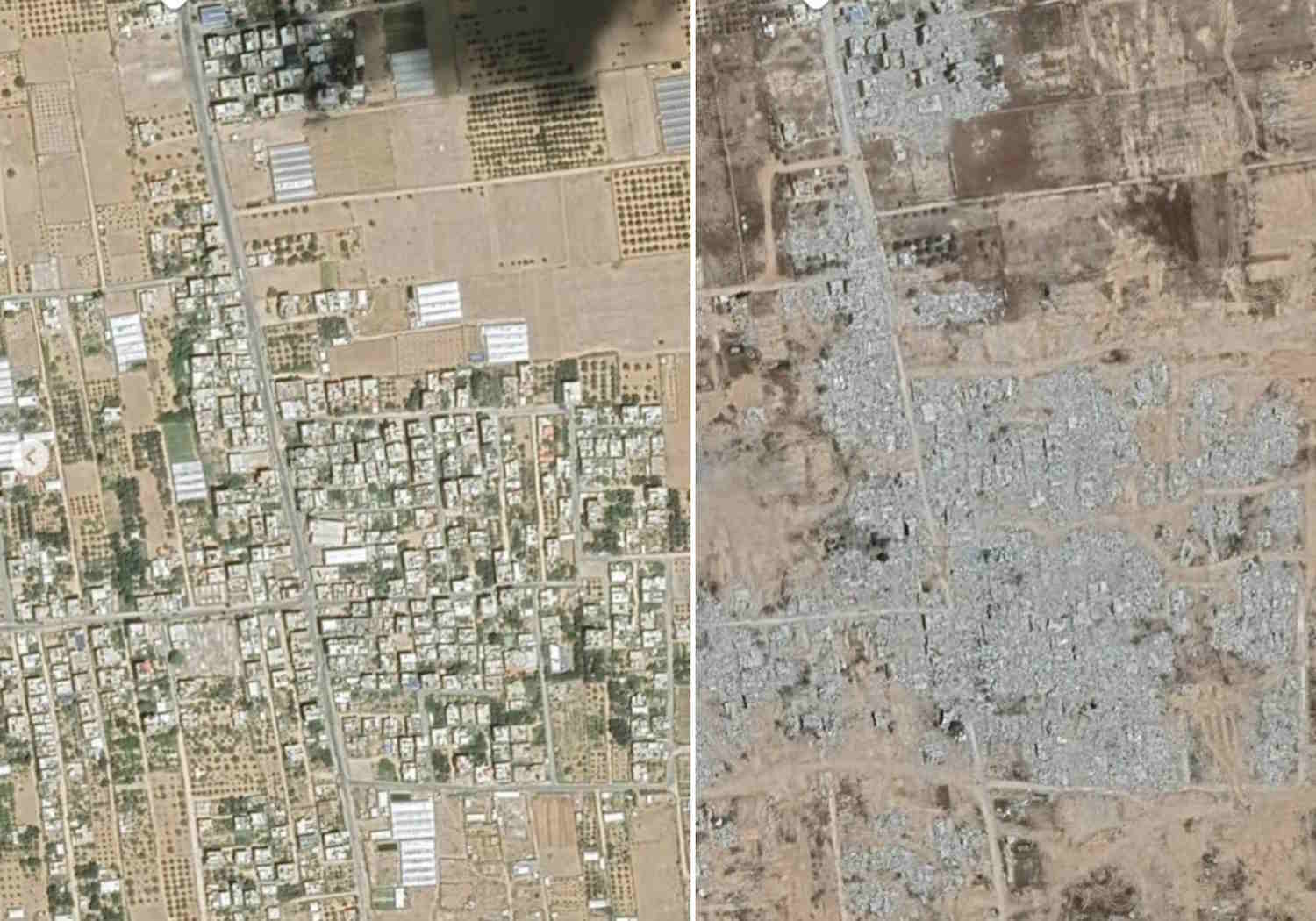Updated satellite imagery of Gaza reveals catastrophic destruction of homes, farmland, and cultural landmarks, underscoring an urgent and deepening humanitarian crisis.

There are no buildings left in the Netzarim Corridor—just piles of rubble, sand, and a haunting silence. You can see it for yourself on Google Earth or Google Maps: the updated satellite images of Gaza reveal a flattened landscape, almost lunar in appearance. These images date back to October and November 2023, meaning what you’re seeing is not even the current situation. The reality on the ground could be even worse.
And it’s not just Gaza. From war-torn countries like Ukraine to the bustling centers of New York and London, satellite imagery across the globe typically takes about two years to be refreshed. In conflict zones, the wait is often longer—and not just due to technical limitations.
According to a late-2023 investigation by Semafor, satellite imaging companies have delayed the release of imagery from Gaza. Planet Labs, one of the main providers of images to Google, reportedly restricted access to high-resolution shots of the Gaza Strip during the height of the conflict.
Before and after Gaza: the irreversible transformation
Google Earth's updated satellite images of Gaza show a fractured reality
Visible on both Google Earth and Google Maps, the updated satellite images of Gaza show destruction mostly in the area around the Beit Hanoun neighborhood in the north. Though recently added, the images date back to October and November 2023, meaning Google still doesn't have current satellite mapping of Gaza.
Posted by Mashable on Tuesday, February 11, 2025
From above, the story of Gaza is painfully clear. Entire neighborhoods—places like Beit Lahia, Beit Hanoun, and the Jabalia refugee camp—once packed with life, are now vast fields of grey, indistinguishable from one another in the monochrome of devastation.
An analysis by the United Nations Satellite Centre (UNOSAT) in December 2024 found that approximately 69% of buildings in Gaza were either damaged or destroyed. In Gaza City itself, the percentage was even higher: 74% of structures bore the scars of bombardment.
What these images show is not just urban destruction. They speak of uprooted lives, vanished schools, shattered homes—and they signal a humanitarian catastrophe still very much unfolding.
The environmental and agricultural toll
As with all modern wars, the landscape pays the price too. Gaza’s agricultural sector—essential for both economy and survival—has been hit hard. By January 2025, 80% of tree cover had been lost, and over 67% of cultivated land was damaged.
These are not abstract figures. They mean that food insecurity has reached crisis levels. Families that once depended on olives, citrus, and grains now face severe shortages, with little left to harvest and no infrastructure to rebuild quickly.
cultural heritage, reduced to ash
It’s not only homes and farms that have vanished. Gaza’s cultural heritage—the places that tell the story of a people—has also been targeted, whether intentionally or as collateral damage.
The Great Omari Mosque and the Church of Saint Porphyrius, two spiritual and historical icons of the region, have been severely damaged by airstrikes. Worse still, the Central Archives of Gaza, a repository of invaluable historical documents, has been completely destroyed.
A loss like this cannot be undone. These were not just buildings—they were anchors to memory, to continuity, to identity.
A humanitarian collapse
With infrastructure obliterated, Gaza’s humanitarian crisis has deepened beyond precedent. By January 2025, more than 1.9 million people—around 85% of the population—had been displaced from their homes.
Many of them now live in dire conditions, with limited or no access to clean water, food, or medical care. Makeshift shelters offer little relief. Diseases spread easily. Mental health, especially among children, is a quiet casualty of the chaos.
All of this raises serious concerns about human rights violations, and calls into question the adequacy of the international community’s response. The need for immediate humanitarian aid and long-term rebuilding efforts is urgent—not tomorrow, not in a year. Now.
